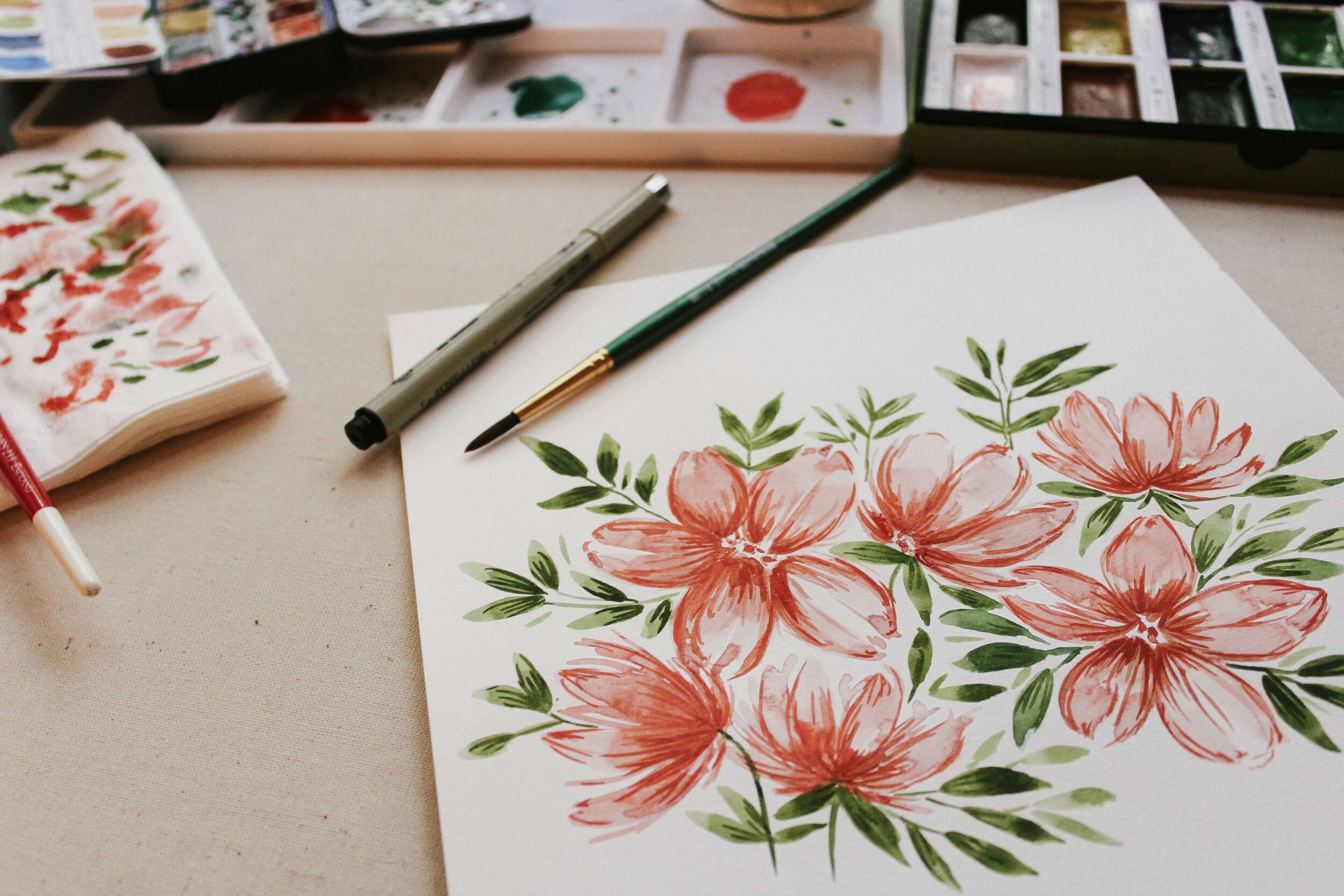How To Drop Into Flow: Tips and Strategies
We all know the feeling—you’re completely immersed in an activity, where you lose track of time and don’t seem to notice that you’re hungry or tired. Your focus is undivided on the task at hand, with no room to be self-conscious or contemplate anxieties. There’s a loss of ego as you merge with the environment, leaving you energized and completely present in the moment.
This is what is called “being in the flow”.
Whilst you might just think it’s some hippie-dippie word people throw around, the “flow” state is a real and physiological response in the body. It can spontaneously arise but you can also take proactive measures to increase the chances of getting into flow.
It’s commonly associated with athletes, who are able to get ‘in the zone’ and achieve peak performance levels. We also think of flow in relation to creativity—the writer who’s absorbed in writing their novel, the artist who paints for hours-on-end, or the dancer who performs without consciously thinking about what step comes next.
But you can drop into your flow state in just about any activity, as long as it meets a few conditions. Ultimately, the activities which allow one to drop into flow will differ from person to person, depending on their unique passions and skill-set.
Definition and Characteristics of Flow
In the 1970s, Mihaly Csíkszentmihályi began interviewing artists, athletes, and people from all different backgrounds and career fields on their experiences of happiness, with a goal of finding out “what makes a life worth living”. In his interviews, the concept of “spontaneous flow” kept resurfacing, to which he decided to term simply “flow”. In his famous 1975 paper, Csíkszentmihályi gave this definition:
“Flow denotes the holistic sensation when we act with total involvement… it is a state in which action follows upon action according to an internal logic which seems to need no conscious intervention on our part.”
His research also found six elements that define the experience of flow:
Merging of action and awareness—there is no dualistic perspective or split in awareness.
Centering of attention—focused attention on a limited stimulus field.
Loss of ego—the transcendence of individuality, a loss of self-consciousness. This has actually been studied in neuroscience as ‘transient hypofrontality’, which refers to when the prefrontal cortex is less active, as we can’t get into the analytical part of our brain which overthinks during flow states.
Control of action and environment—feeling a personal sense of agency and control over the situation.
Demands for action and clear feedback—when there is a clear goal and set of actions needed to get there.
Autotelic experience with intrinsic rewards— “autotelic” simply means pleasurable and enjoyable, where the activity at hand is intrinsically rewarding and motivating in itself.
The experience of flow is dependent on doing flow activities—it isn’t going to arise when you are vegging out on the couch. What is needed is just the right amount of challenge met with just enough skill to handle the task. It can’t be difficult enough to induce anxiety. Conversely, it can’t be too easy as that creates apathy or boredom. The sweet spot is between, where you feel capable enough to tackle the challenge but pushed enough so that it requires all of your mental capacity to focus.
So essentially, when you are out of flow, you need to either decrease the challenges of the task or increase your level of skill to meet it.
Here are some strategies and tips to maximize your chances of dropping into your flow state.
Minimize internal and external distractions
There’s a reason why so many people are obsessed with morning routines. By clearing your internal ‘clutter’ (excess thoughts) through practices such as meditation, journaling, or exercise, you wipe your mental slate clean and thus are able to focus with more undivided attention. When you’re anxious or overwhelmed, it is SUPER unlikely you will be able to drop into flow.
Likewise, when you’re surrounded by external mess and distractions, your sense of flow will be repeatedly interrupted. Who’s guilty of checking their phone every time that familiar sound dings? It’s practically impossible not to—your best bet is to turn off notifications and put your phone on silent or airplane mode.
Also cleaning the physical space you’ll be working in will help immensely with concentration, as having stuff everywhere can be a distraction (even subconsciously). My Mars in Virgo literally cannot handle working in a space of mess!
Set clear goals
When you sit down to work on a task without any clear direction or goal to work towards, it can feel overwhelming to say the least. But if you have a clearly defined goal, it makes it much easier to get into flow. For example, if you’re working on a website, you could specifically set out to finish the “about” page, or perhaps design the logo. Try to keep it to a singular focus, as this will make it easier for you to direct all your attention towards the specific task.
Do what you’re excited and passionate about
As cliche as it is, when you do what you love, you are more likely to “accidentally” drop into a state of flow. Of course, this doesn’t just pertain to work and career — doing any sort of hobby that you enjoy will optimize your chances of flow. Those meditative coloring-in books, or even video games are almost exclusively designed to get you into a state of flow. What do you spend your free time doing? What would you like to do in your free time? Devoting time to those activities where we feel intrinsically motivated–purely from the joy of the process itself—will increase the chances of flow and raise your levels of happiness.
Increase your skill levels through practice
Repetition creates mastery. And when we have mastered a certain skill, we are way more likely to be in flow when doing it. When a task feels too challenging, try to take a step back and look at where you might need to practice a bit more or learn something new. This process can be rewarding in itself! When a skill/concept is truly embodied and understood, we are able to do the task automatically, with no conscious interference needed. This rarely happens overnight—practice really does make perfect.
Add an element of challenge
Alternatively, perhaps you are already a master at the task in front of you so what you actually need is an element of challenge. I believe that we are eternal students and that there is always more to learn on a particular subject or skill. See where you can push yourself a little more, or introduce something new which you haven’t tried in the past.
Listen to your body
Lastly, it’s always important to listen to your body. If you’re tired and hungry before you begin an activity, it’s unlikely you’ll be able to completely surrender to flow. Make sure that you are well-rested, nourished, and hydrated when approaching a task that requires concentration. No matter how much I desire to finish a project or activity, if my body is not being looked after or if I’m in a state of stress, it’s unlikely I will enjoy doing it. And enjoyment is truly the KEY to dropping into your flow!
Is it ironic that I went into a state of flow whilst writing this article on flow? Flow really is a magical experience and can make you feel at one with time and space. I’d love to hear what activities and hobbies activate your own sense of flow - comment below, plus add any other tips that work for you!
You’ll Also Like
Chiara Christian is a Gemini writer with a passion for understanding others and the world around her. You can check out her website here and follow her meanderings @ageministory.





